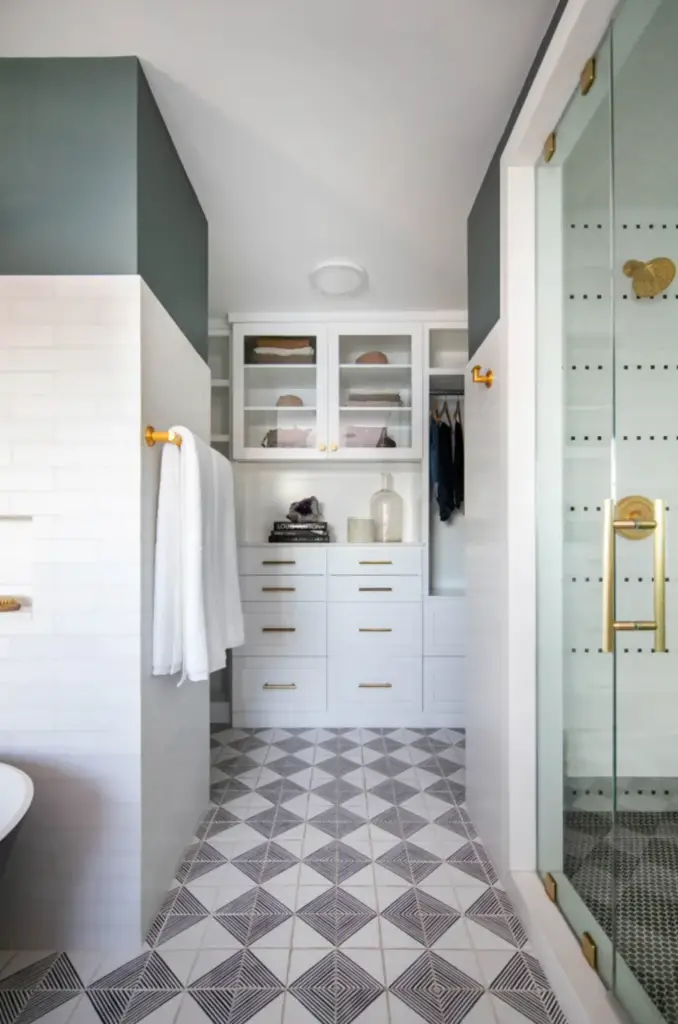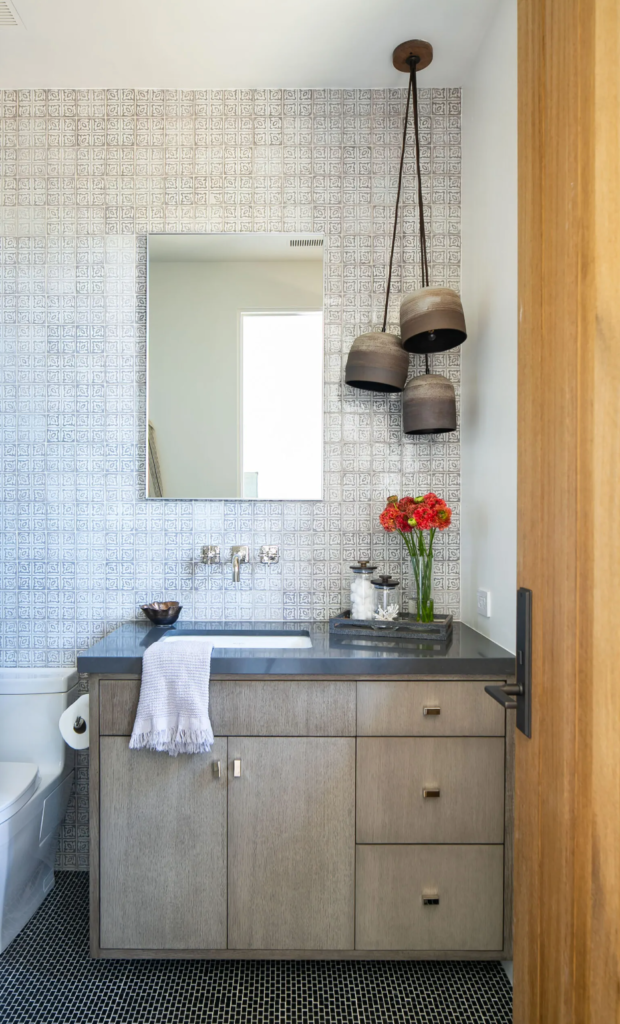Basements, while providing invaluable space for storage, entertainment, or living, come with their unique set of challenges. One of the most common issues homeowners face is basement flooding. Enter the sump pump: a homeowner’s primary line of defense against basement water accumulation. Whether you’re new to home maintenance or looking to understand the basics of this crucial device, here’s your introductory guide to sump pumps.

Consider a sump pump for your finished basement. Used with permission from Blackband Design
What is a Sump Pump?
A sump pump is an electrically powered device installed in the lowest part of a basement or crawlspace. Its primary function is to pump out and divert water away from the house to prevent flooding. Essentially, it’s the heart of any basement waterproofing system.
How Does a Sump Pump Work?
1. Sump Pit: The sump pump sits inside a hole, commonly referred to as a sump pit or basin. This pit collects water, either through drains or natural migration through the soil.
2. Activation: As water fills the pit, a float or pressure switch activates the pump once the water reaches a certain level.
3. Water Removal: The pump then starts to remove the water from the pit, channeling it away from the home through a discharge pipe.
4. Deactivation: Once the water level drops below a specific threshold, the pump turns off.

Consider a sump pump for your finished basement. Used with permission from Blackband Design
Types of Sump Pumps:
1. Submersible Pumps: As the name suggests, these pumps are designed to be submerged in water. They sit inside the sump pit, and their motors are sealed off to prevent electrical short circuits. They are usually quieter and can handle larger amounts of water.
2. Pedestal Pumps: These are mounted above the sump pit, with a long hose dipping down into the water. Pedestal pumps are not submerged, have a more extended operational life, but might be noisier and less powerful.

Consider a sump pump for your finished basement. Used with permission from Blackband Design
Why is a Sump Pump Essential?
1. Prevents Flooding: Whether from heavy rainfall, melting snow, or other water intrusions, a sump pump ensures water doesn’t accumulate in your basement.
2. Mold and Mildew Prevention: By keeping the basement dry, sump pumps reduce the chances of mold and mildew growth, which can cause health issues and structural damage.
3. Foundation Protection: Chronic water accumulation can weaken the foundation of a home. By managing water effectively, sump pumps protect the structural integrity of the house.

Consider a sump pump for your finished basement. Used with permission from Blackband Design
Maintaining Your Sump Pump:
For a device so crucial in preventing basement water damage, regular maintenance is a must.
1. Regular Testing: Pour a bucket of water into the sump pit to ensure the pump activates and removes the water efficiently.
2. Clean the Grate: The bottom of the pump may have a screen or grate to prevent debris from entering. Clean it periodically to ensure unobstructed water flow.
3. Check the Outlet and Cord: Ensure the electrical outlet and the pump’s cord are in good condition.
4. Battery Backup: Some sump pumps come with a battery backup to ensure operation during power outages. Regularly check and replace the battery as needed.
5. Inspect the Discharge Pipe: Ensure the discharge pipe’s end is free from blockages and directs water away from your home’s foundation.
While a sump pump plays a pivotal role in basement water management, homeowners should also consider complementary measures like proper landscaping, maintaining gutters and downspouts, and installing window well covers. Combined, these efforts will ensure your basement remains dry, safe, and a valuable part of your home.
Remember, a sump pump is an investment in your home’s longevity and your peace of mind. Regular maintenance and understanding its functions are keys to ensuring a flood-free basement. Whether it’s a gentle drizzle or a torrential downpour outside, with a reliable sump pump in place, you can rest easy knowing your basement is secure. Thanks to Blue Umbrella Waterproofing for consulting

Leave a Reply